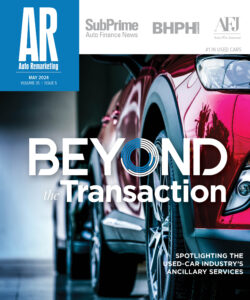TransUnion: Consumer Credit Risk Drops to Lowest Level Since ’05

Triggered in part by the performance of vehicle financing, TransUnion’s Credit Risk Index — a measure of aggregate credit risk in the nation — dropped at the conclusion of 2013 to its lowest level since 2005.
Analysts determined the Credit Risk Index (CRI) decreased to 110.10 in Q4 2013, down nearly 9 percent from 120.64 posted in Q4 2012.
TransUnion pointed out the CRI peaked in Q4 2009 at 129.67, a reading that’s 15 percent higher than the current level.
Looking deeper at the most recent data, analysts found that states experiencing the greatest CRI improvements in the last year, included:
—California: down 12.97 percent from 115.75 in Q4 2012 to 100.74 in Q4 2013
—Nevada: down 12.94 percent from 150.31 in Q4 2012 to 130.85 in Q4 2013
—Florida: down 12.17 percent from 140.35 in Q4 2012 to 123.27 in Q4 2013
—Hawaii: down 11.62 percent from 92.77 in Q4 2012 to 81.99 in Q4 2013
TransUnion indicated the highest risk states are located in the South as Mississippi (152.67), South Carolina (139.27) and Louisiana (139.07) topped the ranking in the latest CRI.
Meanwhile, the improvement in Hawaii pushed the Aloha State to be among the lowest risk states, joining North Dakota (74.57) and Minnesota (78.47).
“With auto loan and credit card delinquency levels hovering near all-time lows for the last two years, and with mortgage delinquencies seeing their biggest drop in 2013 since the housing bubble, a decline in go-forward consumer credit risk would be expected. However, it was a pleasant surprise to see the Credit Risk Index drop to levels not seen in nearly 10 years,” said Ezra Becker, vice president of research and consulting for TransUnion’s financial services business unit.
“This improvement is driven by a myriad of factors, including consumers better maintaining their credit relationships and fewer subprime and near-prime consumers opening new credit accounts.” Becker continued.
“With credit risk at such low levels, there is a possibility that consumers in higher risk segments may see more credit offers, as some lenders decide they have the room in their profit models to take on greater risk,” he went on to say.
While credit scores are highly effective at measuring individual consumer credit risk, Becker acknowledged averaging credit scores does not yield accurate measures of the average “riskiness” of a population because credit scores are not linear.
To address this issue, TransUnion developed the Credit Risk Index as an accurate measure of population risk.
The Credit Risk Index is designed to measure changes in consumer credit score distributions relative to the national distribution and delinquency rates as a whole at the end of 1998.
TransUnion considers 1998 a representative year of credit performance within the usual dynamic of the historical credit cycle. A value of more than 100 represents a higher level of relative risk.
For comparison purposes, the Credit Risk Index had generally ranged between 110 and 120 between 2001 and 2007, experiencing a one- or two-point shift between quarters. Since the latest recession, the CRI mostly stood between 120 and 130.
“The CRI allows for accurate comparisons of risk between geographies and within a given geography over time,” analysts said.

 View The Latest Edition
View The Latest Edition

